An Italian M113 on steroids
OTO Melara in La Spezia, Italy produced More than 4,000 M113 APCs under license for the Italian army and for export. However, the Italian army requested the company build an improved M113, as the current version did not have protection for the gunner and didn’t allow for infantry inside the vehicle to fire while moving. The French AMX-VCI was considered for an alternate base for an improved vehicle but was rejected.Improvements in armor and firepower were also considered. Initial proposals included improvements proposed by FMC (now BAE Systems), with features such as a remote controlled cannon. However, financial issues in the 1970’s restricted military budgets to only look at simple improvements to the M113. Work on designing what could be described as an improved M113 began in the late 1970’s and ended with the delivery of prototypes in 1981 and approval for production beginning in 1982. Since its initial production, the capabilities of the VCC-1 have been greatly improved and nearly 2000 have been produced or converted from older versions. A further 200 were exported to Saudi Arabia. A second version called the VCC-2 was also produced. It was quite similar, as it was only a conversion of the VCC-1. The Italian army classifies the VCC-1 as an “armored fighting vehicle”, along with the VCC-2 Camilino and the VCC-80 Dardo.
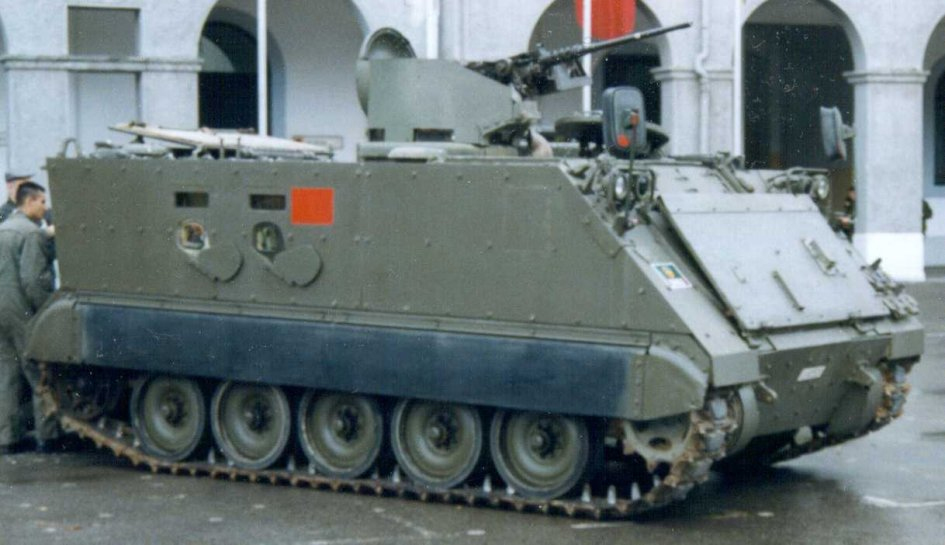
VCC-2 in the 1980s. Credits army-recoignition.net
Design
To create the VCC-1, the M113 was modified in several ways. Armor was provided for the Browning M2 on the roof, four louvers for observation and firing were added to the rear compartment, which was also changed to have sides sloped at 25°. To increase protection from 7.62mm bullets, light AP rounds and 12.7mm rounds, steel plates 6mm thick were added on the sides and front of the vehicle. Due to the reduced internal space, the carrying capacity was reduced from 11 infantry to 7. The remodeled rear compartment displaced the fuel tank, which placed them on the sides of the rear fighting compartment. This, coupled with the inclination of the rear walls reduced the internal space of the rear compartment. In this new configuration, the commander took place behind the driver in a cupola.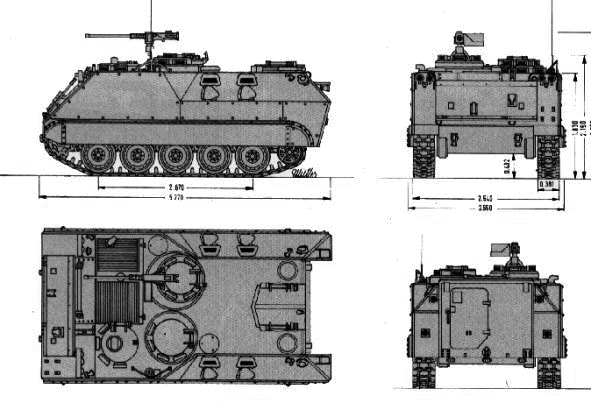
Blueprint of the VCC-1
The main armament is the .50cal M2 Browning machine gun which is protected by 10mm thick armor. The turret also has two banks of three smoke dischargers placed on each side. When firing the hatch is lifted up and locked in place, protecting the back of the operator. A Rheinmetall MK 20 Rh 202 20mm turret remote weapon station was also tested, but eventually ruled out as too costly. The lack of a turret with a heavier armament has prevented this vehicle from being classified as an IFV. There are four side firing ports and a rear port, with viewing windows above them. The roof is fitted with two exhaust fumes ventilators.
The VCC-1 is amphibious, and swims with propulsion and steering from the tracks, moving at 5km/h through water. The only preparations needed for amphibious driving is to activate bilge pumps and to erect the trim vane. The same power unit, a Detroit 6V53T, 6-cyl. diesel 275 hp (205 kW) with a power/weight of 22.36 hp/tonne coupled to the Allison TX-100-1 3-speed automatic transmission was kept, but performance was slightly degraded due to the higher weight of the vehicle (top speed 64 kph compared 68 kph on the M113).
Variants
-VCC-1 Camilino EAAK. This Special Spaced Armour (SSA) version was used by the Bersaglieri in Bosnia, 1995. The upgraded armor was derived from the one developed by RAFAEL (Israeli military R&D laboratory), for upgraded Israeli M113s. It consists of a combination of flat perforated sheets (for decreased weight), standard sheets and modular plates at the front, and wavy composite material installed on the sides. Despite adding (in combination with previous modifications), almost two tons to the original vehicle (nullifying the amphibious capability and hampering mobility and range as there is no engine upgrade), this kit provides some degree of frontal and side protection against RPGs and heavy rounds, including light autocannon rounds. It is better suited in particular for asymmetric warfare in an urban environment.-VCC-2 Camilino. The VCC-2 is a conversion of the VCC-1. It includes an addition of armor to front and sides. The VCC-2 can be easily identified as it does not have the sloped armor in the rear compartment like the VCC-1. The passenger capacity was also increased to 11.
-The Mark 2 (prototype) which tested a remote weapons station for the cal.50
-The Mark 3 (prototype) which tested a German Rheinmetall 20 mm autocannon RWS
-A closely related vehicle developed by the company Aris, the fully amphibious Arisgator, is inspired by the American LVTP-7 with a "kit" fixed to the front and rear of the M113, which still carries its original complement.
-Another derivative is the extreme C.13 designed with a very low profile for export, but no orders followed.
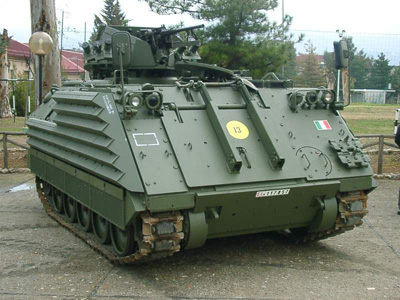
VCC-1 EAAK with advanced add-on armour used by the amphibious San Marco Battalion(wikipedia)
The VCC-1 in service
The VCC-1 was placed in service with armored and mechanized infantry brigades through the 1980s, mostly to those in cooperation with tank units. OTO Melara’s record 600 vehicles were built for the Italian Army, plus 200 converted with TOWs for Saudi Arabia, for 800 total. However, with a conversion of about 1,200 additional M113s the remainder is likely to be assimilated to the less-advanced VCC-2. Despite a heavier weight by 1000 kg and lower amphibious capabilities, 30 VCC-1s were given to the San Marco Battalion (Venezia) because of the lack of other modern vehicles available. These vehicles took part in peace-keeping operations in the ex-Yugoslavia (Bosnia) in the 1990s, but the first were active in Lebanon in 1983. EAAK versions also took part in the operations in Somalia.VCC-1s are being gradually replaced by the VCC-80 Dardo, although with considerable delay.
Links
The VCC-1 on Wikipedia (Italian)The VCC-1 on Army-guide.com
The VCC-1 on Ferreamole.it (Italian)
VCC-1 specifications |
|
| Dimensions | 5,04 x2,68x 2,08m ( x x ft) |
| Total weight, battle ready | 12 tons |
| Crew | 2+7 (driver, Cdr, 7 infantry incl. gunner) |
| Propulsion | Detroit 6V53T, 6-cyl. diesel 275 hp (205 kW) |
| Suspension | Torsion bars |
| Speed (road) | 64 km/h (cc mph) |
| Range | 450 km (0 mi) |
| Armament | 12.7 mm Browning M2 HMG, 1 rear 7.62mm GMPG |
| Armor | 25-32+6 mm - see notes |
| Total production | 800 |
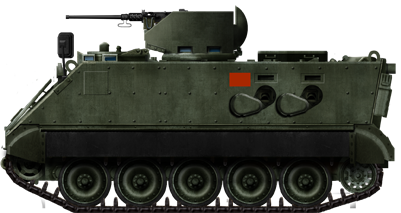
Italian VCC-2 in the 1980s. It was a less advanced conversion than the VCC-1 but has a protected cal.50 operator, 6 mm bolted appliqué armour, two pistol ports with bulletproof glass vision devices. However it could carry 11 infantry as the regular M113 and the amphibious Arisgator. About 1100 to 1760 were produced, now replaced by the VCC-80 Dardo.
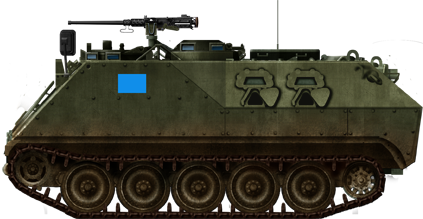
VCC-1 Camillino, first version prior to the Lebanon intervention in 1983. It was basically an Oto Melara improved XM765 (M113A1) with sloped armor and firing ports, but reduced capacity to 7 passengers.
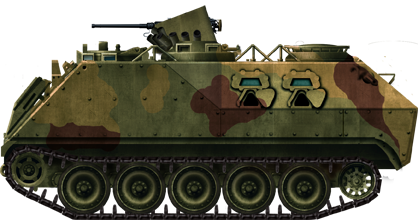
Camouflaged VCC-1 Camillino in the 1980s
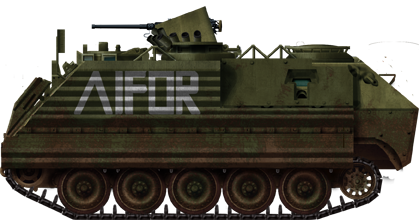
VCC-1 with EAAK Special Spaced Armour (SSA) of the Bersaglieri in Bosnia, 1995. Kits were conceived by RAFAEL (Israel) supplied to Italy by FMS Corp. (now Marvin Land Systems) and were added just in time for the peace keeping forces operating in Somalia.
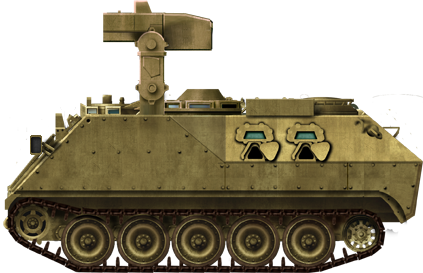
VCC-1 TOW with the licence-built TOW Under-Armour (TUA) turret for the Saudi Arabian Army. 200 to 224 are in service, delivered in 1983-84.
Gallery
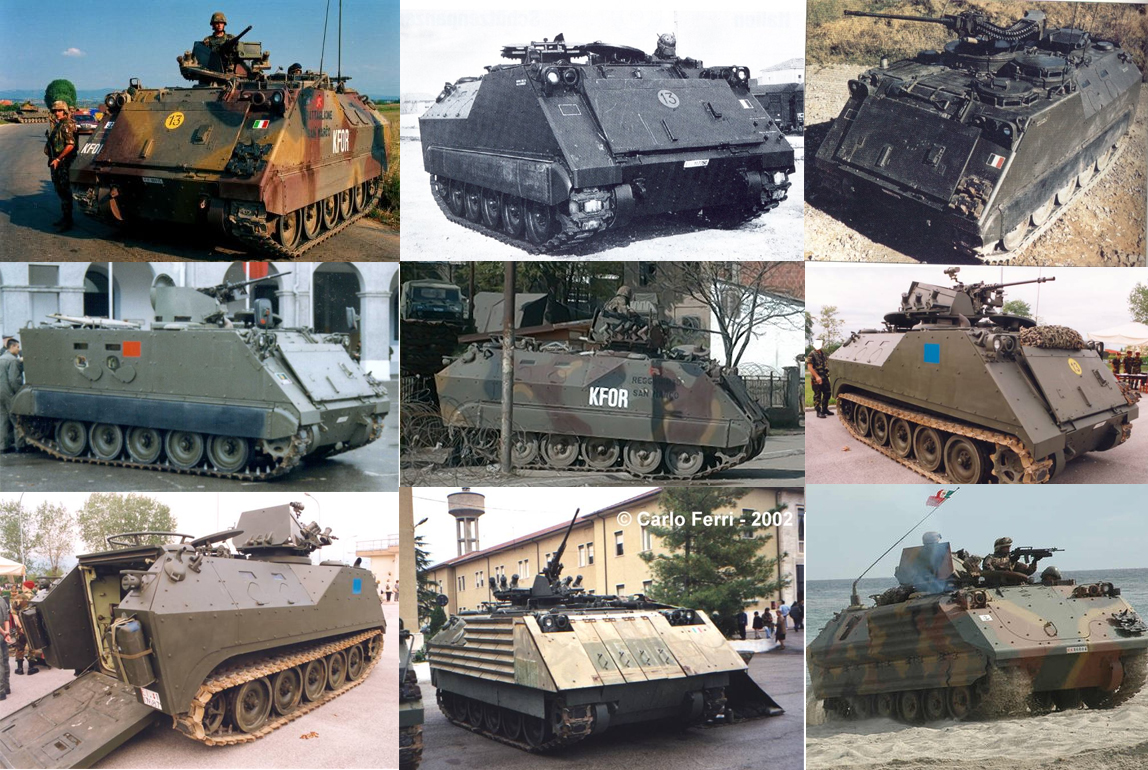
Various references from the web

Cold War Tanks


































Cold war tanks posters

Cold War Main Battle Tanks

Cold War Soviet Army
Museums, Movies, Books & Games
The Tanks and Armor in pop culture
Tanks and armored vehicles in general are only really grasped when seen first person: The mass, the scale, it's all there. Explore also the way tanks were covered in the movie industry, in books and in video games.Movies:
Best tanks movie on warhistoryonline.com
On imdb.com
On bestsimilar.com/
miltours.com
liveabout.com/
watchmojo.com
Video Games:
pcgamesn.com
historyhit.com
levvvel.com
vg247.com/best-tank-games
mmobomb.com/
alienwarearena.com

